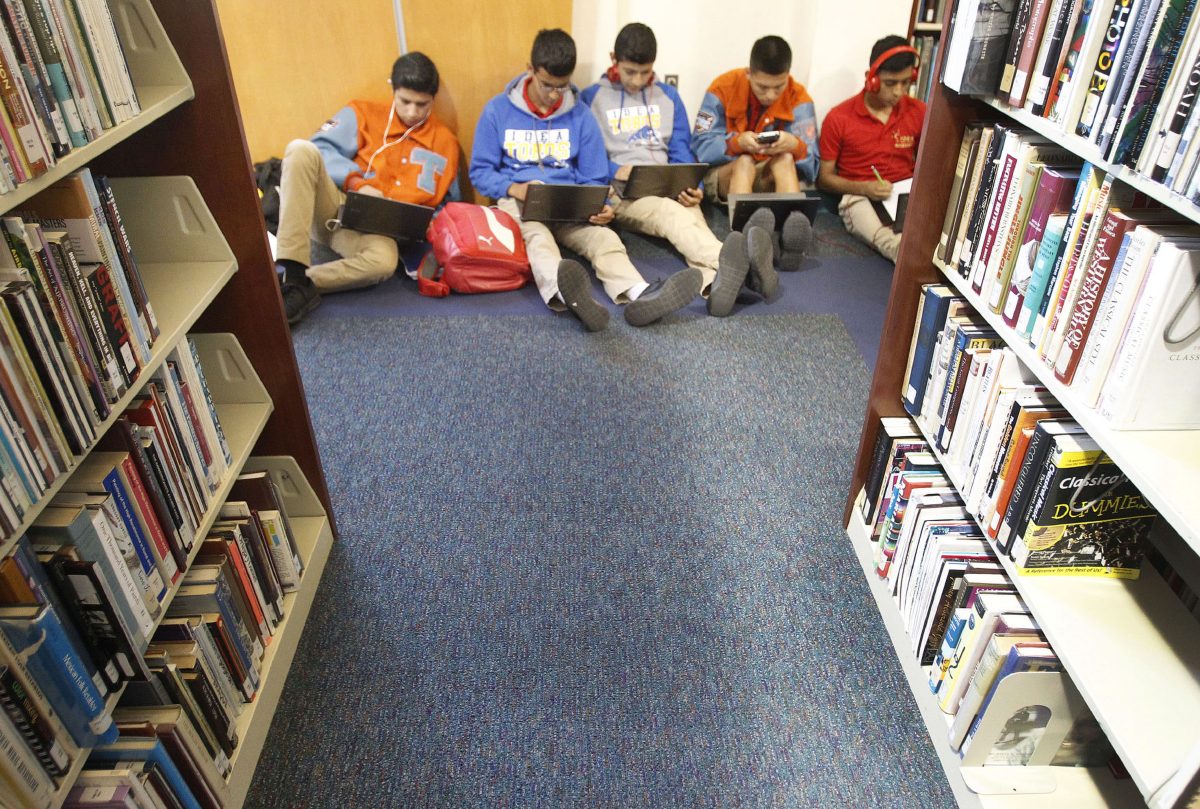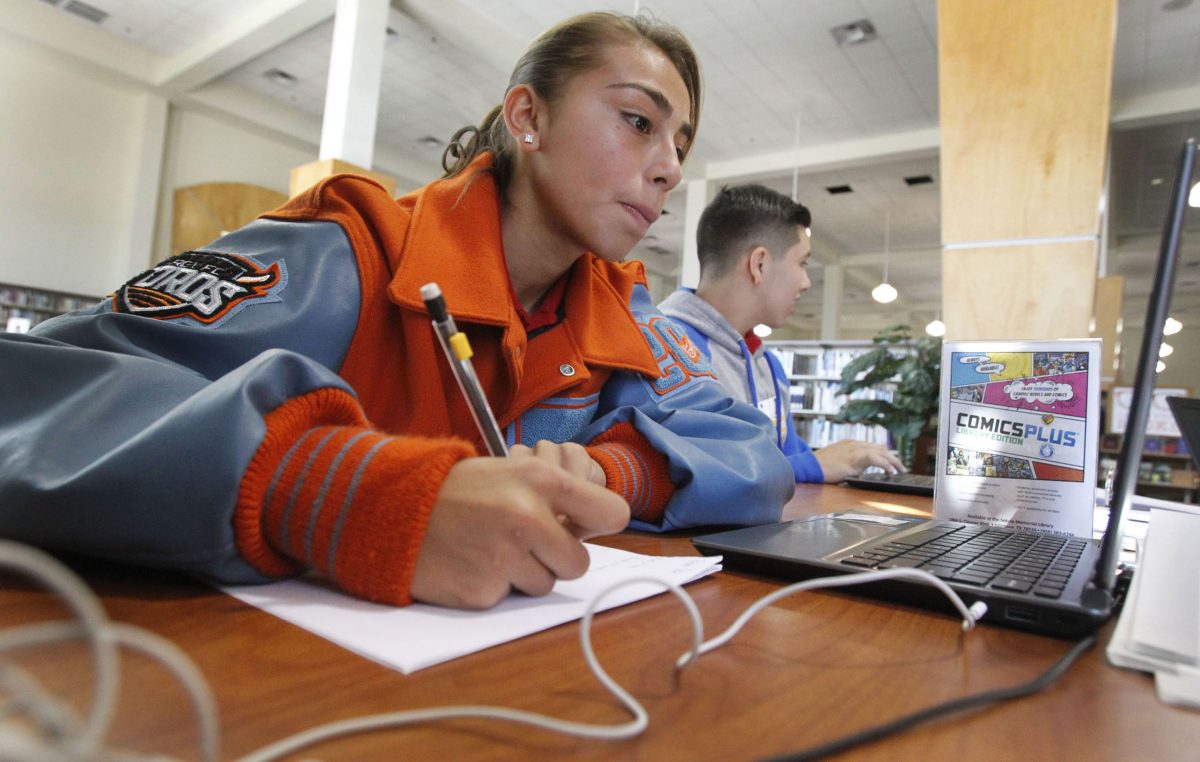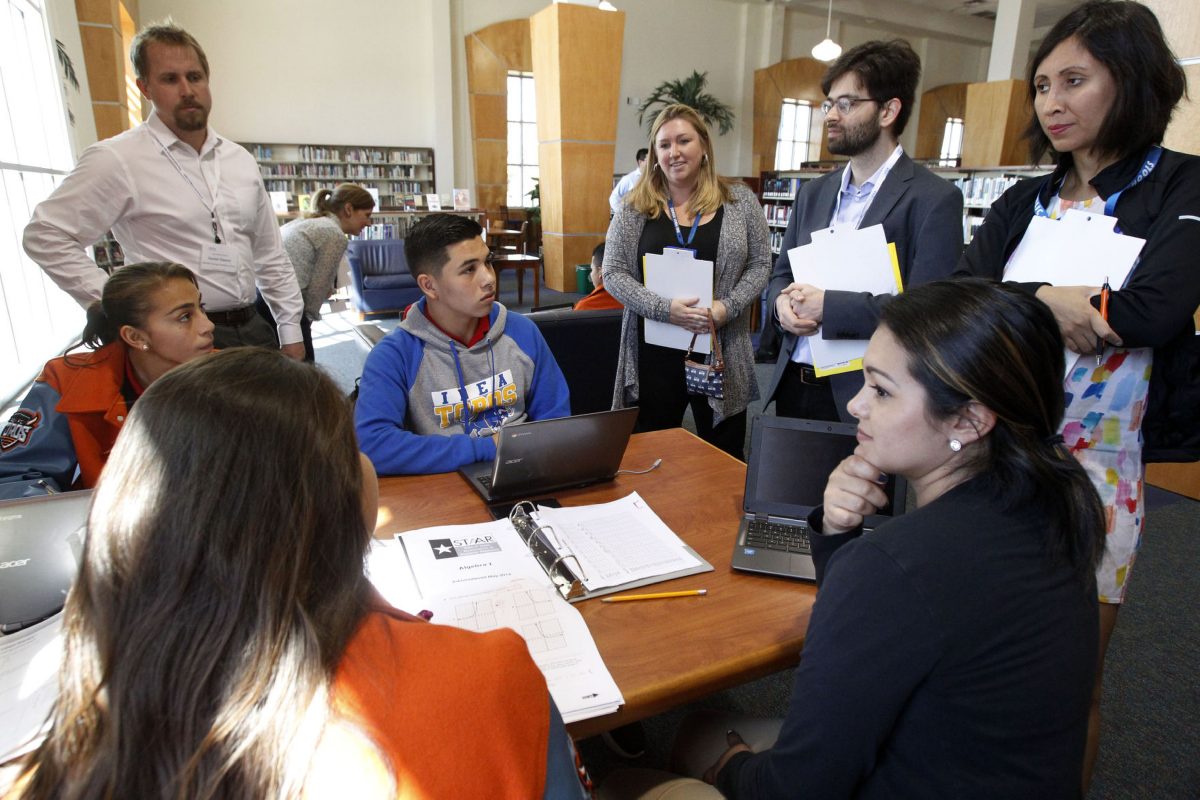
EDINBURG — A group of about a dozen blended, or personalized, learning experts paid their fourth and final visit to IDEA Public Schools last week to evaluate and provide feedback on an initiative to allow students to learn on their own.
EDINBURG — A group of about a dozen blended, or personalized, learning experts paid their fourth and final visit to IDEA Public Schools last week to evaluate and provide feedback on an initiative to allow students to learn on their own.
IDEA implemented blended learning about four years ago with the help from a $29 million Race to the Top grant, said Pablo Mejia, IDEA’s senior director of personalized learning. The program blends a traditional classroom experience with the freedom of conducting some lesson plans fully online and at the student’s own pace.
“Because of Race to the Top, we’ve just been in this whole kick of ‘innovate, innovate, innovate’ and figure out how to use technology to enhance learning,” said Tom Torkelson, founder of IDEA Public Schools.
The idea to bring blended learning to IDEA was born out of a push by Diane Tavenner, founder of Summit Public Schools in California, and Facebook co-founder Mark Zuckerberg to bring individualized learning to more schools across the United States, Torkelson said.
IDEA uses the Summit Learning platform, which supports the program by providing online curriculum, testing and progress tracking.
“We heard a lot about students excited to take more ownership of their class,” said Alex Hernandez, Charter School Growth Fund partner who traveled with the group. “In some ways it’s freeing to a lot of students, and on a flip side it’s scary. … There’s just a lot more choices on how students can manage their learning.”
The group of experts toured the some of the schools including the recently opened IDEA Toros in Edinburg, a soccer academy and the only campus with 100 percent blended learning program.
“ It really looks very different in different schools,” Mejia said. “The rest of our schools implement blended learning from kinder to seventh grade and now all the way through high school, but it looks very different.”
Blended learning aims to have teachers act more as facilitators and allow students to go through the curriculum and test on each subject on their own using online platforms. At most of the IDEA schools this is done only for specific subjects or day periods, rather than a full day of personalized learning.
At Toros, the students have the opportunity to jump from subject to subject, but they also have to make sure they are on track by being up to par or ahead of a blue line that marks the expected progress. And it is not only a matter of passing a test, only grades of 80 percent or above count as passing.
“At first I didn’t know what was going on,” said 15-year-old Clarissa Martinez, a student at Toros. “But then I got used to it and it’s really nice. It seems like it’s not that much pressure… (I like) the freedom. You can get ahead and go and work on something else.”
This is the first year IDEA is venturing into the 100 percent blended learning program, and the soccer academy seemed to be the perfect place to started, Torkelson said.
The students have a different schedule than all the other schools because they also train with the Toros coaches in the morning and afternoon. But only if, and when, they have successfully kept track of their studies.
Being that this is the academy’s first year, there are still many questions and changes they are hoping to make. Toros Principal Brad Scott said the hardest part has been the transition into the “own your own” mentality for both students and teachers.
With a cohort of 57 high school students and only two teachers, who mainly act as facilitators, one of the biggest challenges has been not having a wide range of teachers who are experts on each subject. Sometimes the teachers are learning along with the students, but they recently decided to hire tutors to help the student with specific subject areas.
“I’m afraid that with one teacher for every group, I’m afraid we would go back to the traditional teaching style,” Scott said. “But it’s good to have experts here who know the content. … We will have that next year, one teacher available for every content (area), but it would be one teacher per class.”
Next year the school is adding middle-schoolers to the mix, so the growth will require new changes and more teachers, but Scott said their goal is to maintain that personalized learning atmosphere.
Even though these might be issues unique to IDEA Toros, Mejia said they are interested on the experts’ feedback to make sure every school has a blended learning program that is not outdated.
“We are growing a lot so one of the problems is how do we start new schools and make sure they are high quality from the start,” Mejia said. “How we do make sure the model doesn’t get stale over time.”
After talking to some of the students, visiting schools and talking to school officials, the group shared some of their views and helped the IDEA team draft a three-year strategic plan to make sure new schools launch with effective models and current schools adopt innovation, Mejia said.
“I think we need to better write down what success looks like,” Mejia said. “And then what are the resources, training, support structures that need to be in place for our schools to be able to hit those measures of success.”
There is not a clear view of whether or not the blended learning program will be implemented at a larger scale throughout IDEA schools, Mejia said. His team is looking closely at Toros’ progress and analyzing how and at what scale this model could benefit other IDEA students.
“Right now we have a clear instructional teaching and learning model and yes, it includes some blended/personalized model,” Mejia said. “How much of that is it going to look like Toros in the next five years? I don’t know.”








